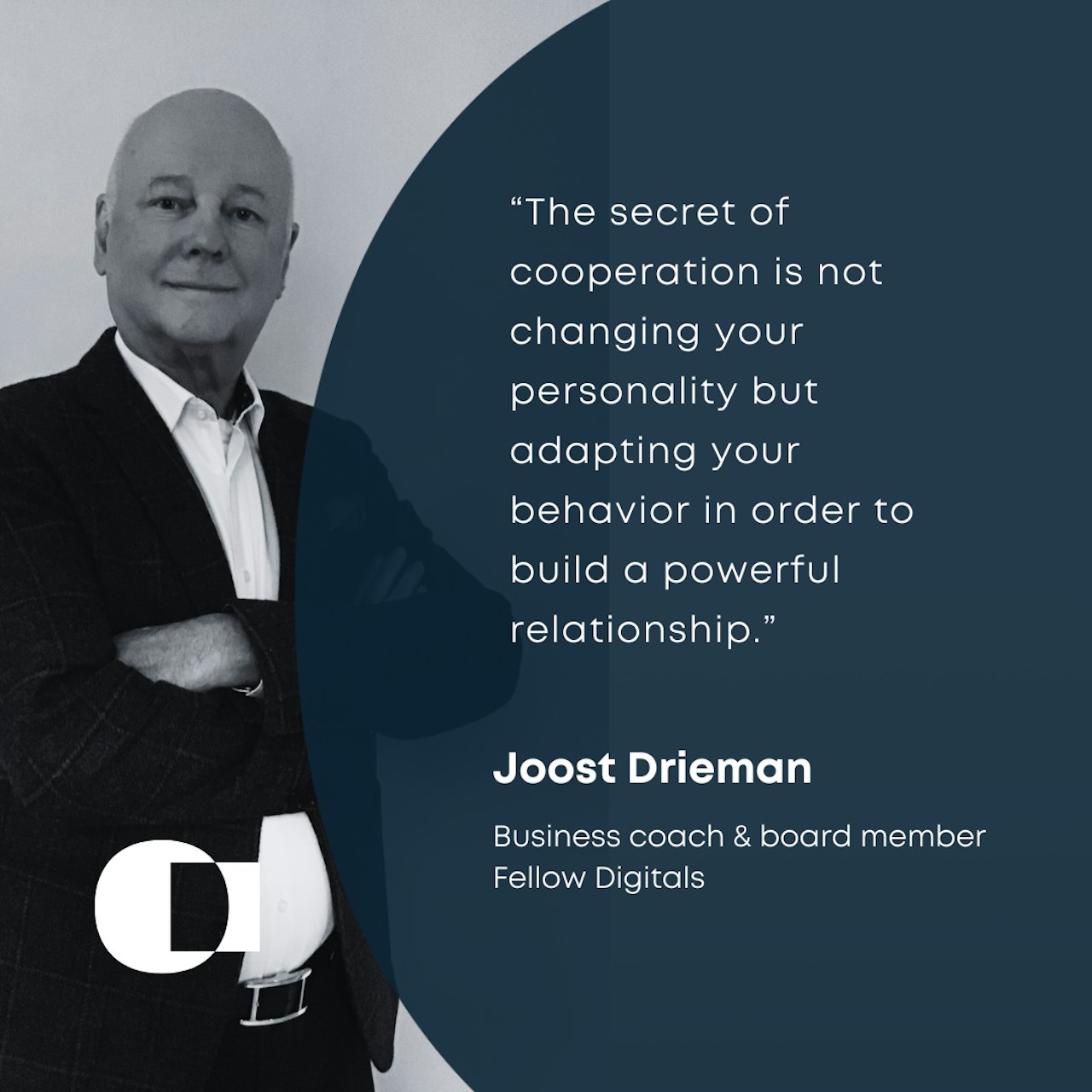The Art of Working Together: Enhancing Collaboration in the Workplace
Blog | workplace happiness

In our series "Building a Healthy Work Environment," Joost Drieman, an experienced senior certified coach and business advisor, shares over 35 years of expertise in guiding companies towards thriving work environments. In this episode, we're delving into how to foster cooperation and balance relationships at work. Using the “Rose of Leary”, Joost Drieman shares practical tips to improve communication, collaboration, and team effectiveness.
Embracing individual personalities in a healthy work setting
In nurturing a healthy work environment, it's essential to embrace individual personalities and social styles. However, when two individuals collaborate, it can sometimes lead to tension, creating challenges in teamwork. This can make it difficult for people to work together harmoniously. Luckily, there is an array methods and tools available to improve communication, collaboration, and foster positive relationships in the workplace.
One such tool is the ”Rose of Leary”, developed by Timothy Leary. It's a powerful tool designed to help understand how people interact and behave in relation to one another. Understanding how this tool works can significantly enhance your ability to cooperate and communicate effectively.

The Rose of Leary: A Guide to Understanding Interactions
The Rose of Leary consists of a horizontal and vertical axis. The horizontal axis represents the intensity of relationships (individuality versus togetherness), while the vertical axis signifies attitudes towards others (dominance versus submission). Individuals located in the same quadrant tend to exhibit similar behaviors. For instance, if two people find themselves in the upper left-hand quadrant (attack), a power struggle may ensue. Conversely, if both individuals occupy the bottom right-hand quadrant (adjust), don't expect much initiative, as they are more inclined to follow and support.
The two basic strategies are:
1) Complementary Reactions:
When faced with behavior you wish to change, employing the opposite behavior often yields positive results. For example, if you desire someone to take the lead, adopt a cooperative stance from the "adjust" quadrant. By becoming a supportive follower, you can encourage the other person to step up and take charge.
2) Influence Through Adjacent Behaviors:
Behaviors adjacent to each other horizontally tend to influence each other constructively. To positively influence someone, consider adopting a behavior style located on the opposite side of the vertical axis.
The complementarity theory
In his complementarity theory of the rose of Leary, Timothy Leary indicates how to behave in order to influence other people’s behavior:
1) Above behaviour triggers Below behaviour
Unconsciously we are inclined to respond submissively to above behaviour and we let ourselves be guided and controlled by this.
2) Below behaviour triggers Above behaviour
Unconsciously we are inclined to display leadership behaviour when we interact with people who display below behaviour, we are inclined to take them by the hand and control them.
3) Opposed behaviour triggers Opposed behaviour
Unconsciously we are inclined to react more critically when someone else is critical and we are even inclined to agree with so-called defiant behaviour.
4) Together behaviour triggers Together behaviour
Unconsciously we are energized by working together in harmony. It stimulates us to continue doing our work and to listen to other people’s opinions.
Workplace scenario
How would this look like in a real world setting? Let’s take the upper left-hand quadrant (attack) of the Rose of Leary:
Sarah and Alex both hold leadership positions within a medical firm. Both are strong-willed and assertive individuals, often leading to clashes in decision-making and communication. Sarah tends to take a dominant approach, frequently asserting her ideas and opinions without considering Alex's input. As a result, their working relationship has become strained, hindering team collaboration and productivity.
Solution: To address the tension and foster cooperation with Sarah, Alex, as her supervisor, must adapt his behavior to influence Sarah positively. Recognizing that Sarah's dominant behavior may be fueled by a desire for support and collaboration, Alex should adopt a supportive and helping style himself. For instance, if Sarah tends to exhibit a behavior of "Attack" (dominant) according to the Rose of Leary, Alex could mirror this behavior by adopting a supportive and helping approach, such as "We like each other" (supportive helping), which is horizontally opposite to Sarah's dominant behavior. By demonstrating support and actively seeking Sarah's input and collaboration, Alex can encourage her to adopt a more cooperative and inclusive approach to decision-making and teamwork. This shift in behavior from Alex can help alleviate tension and foster a more positive and collaborative working relationship with Sarah.
Conclusion
By understanding the dynamics of the Rose of Leary, and coaching individuals towards adapted positions, you can foster healthier and more productive collaborations, leading to improved communication and relationships in both personal and professional settings.

Practical Tip
Effective collaboration in the workplace starts with a well-designed onboarding system. Sensitizing every new employee to act on “Together Behavior” and providing a clear role description, including expected “above” or “below” behavior, can help avoid discrepancies.
We love to share our knowledge with you
Related blogs



